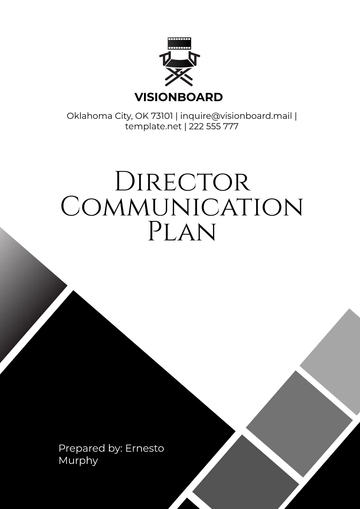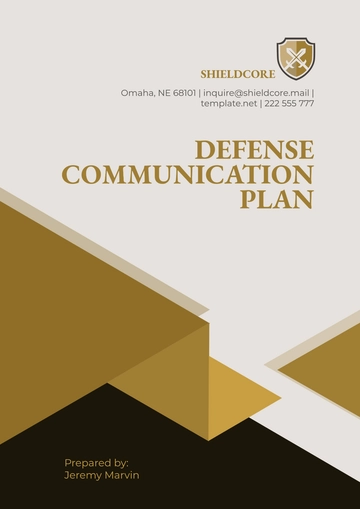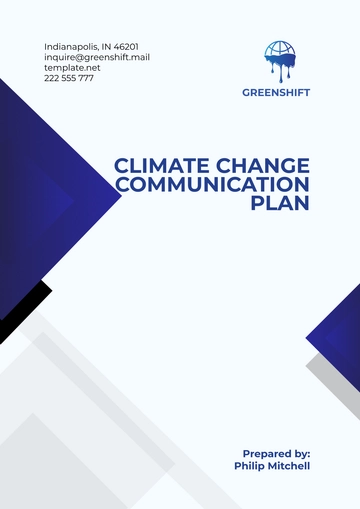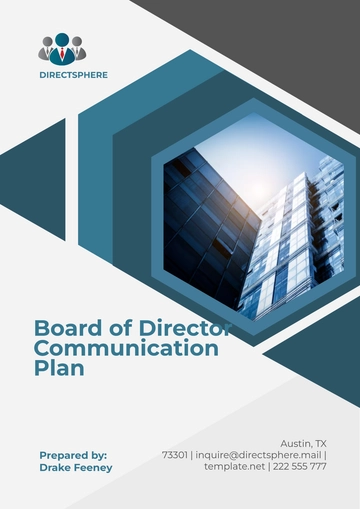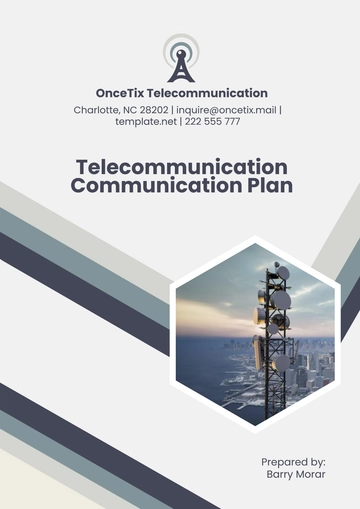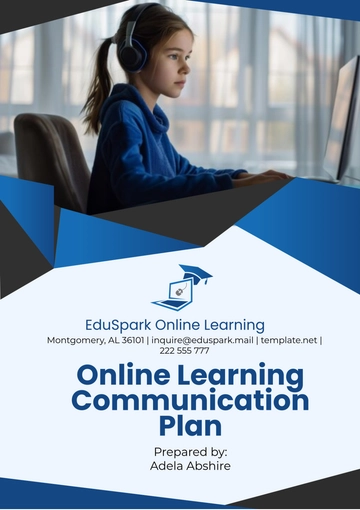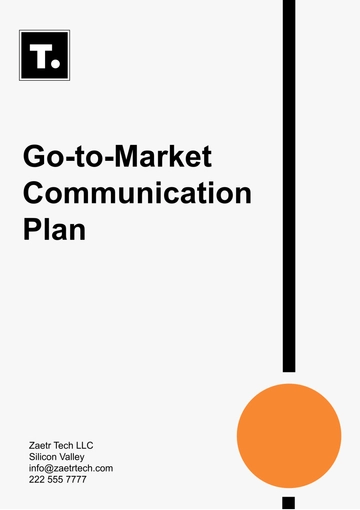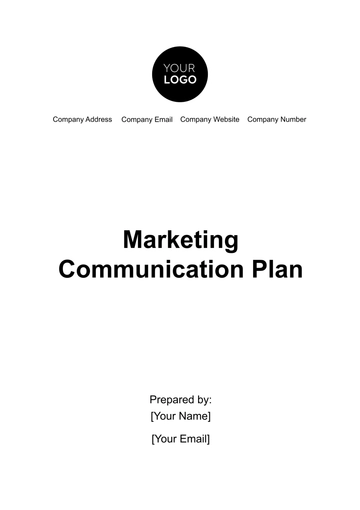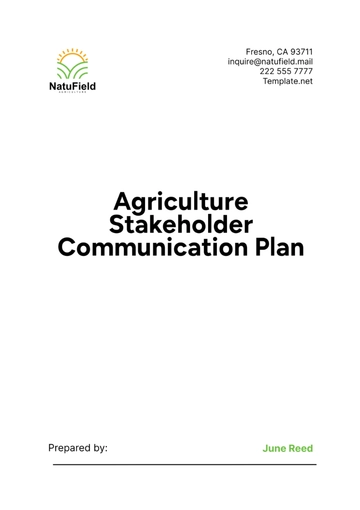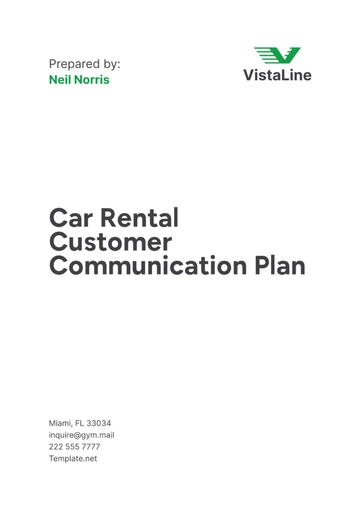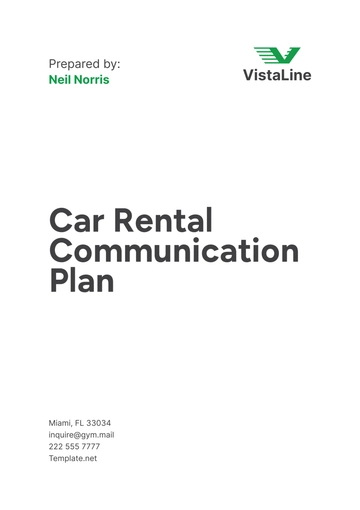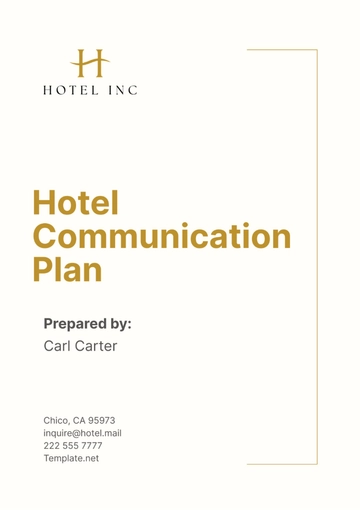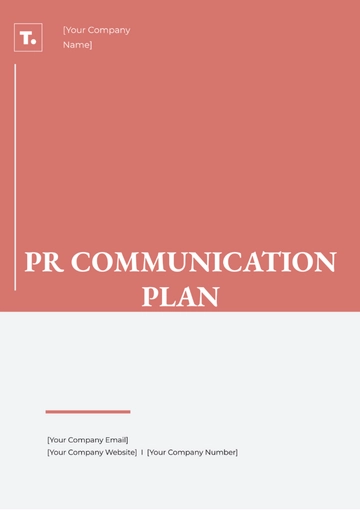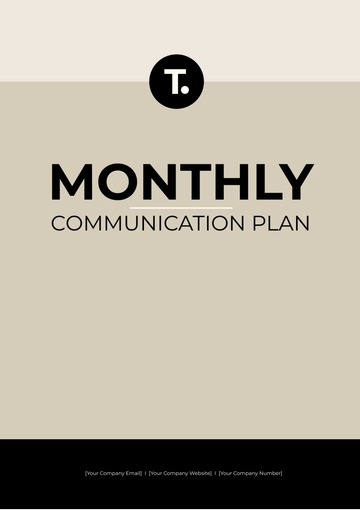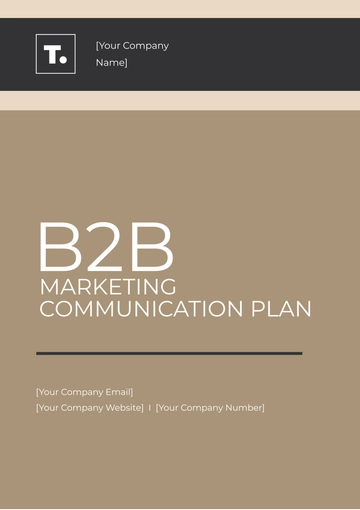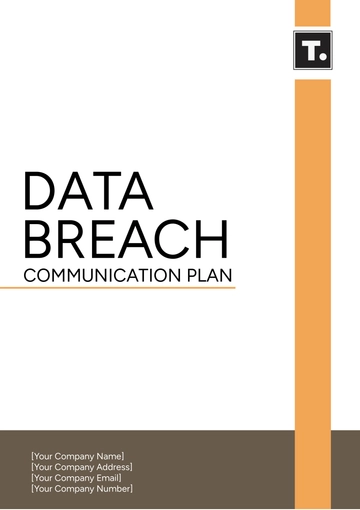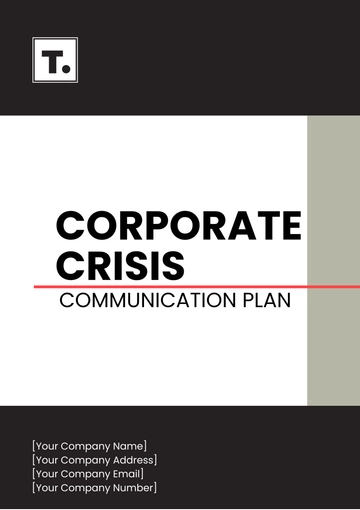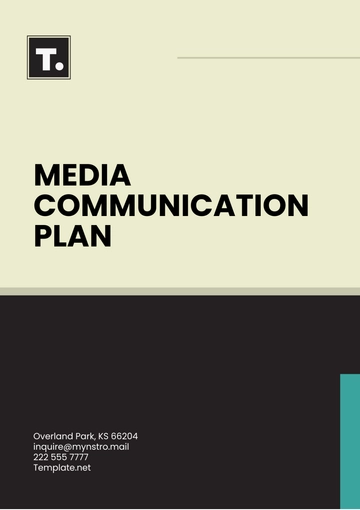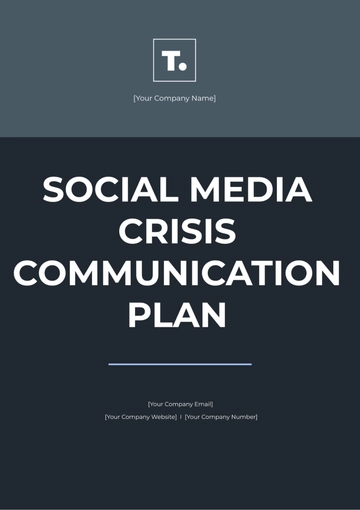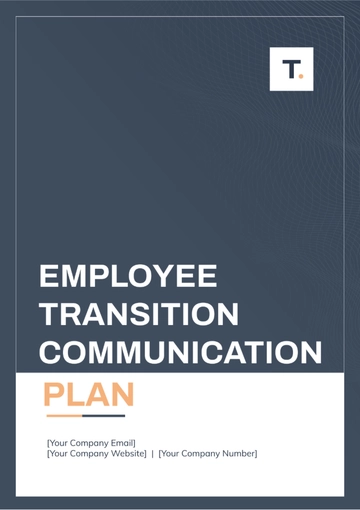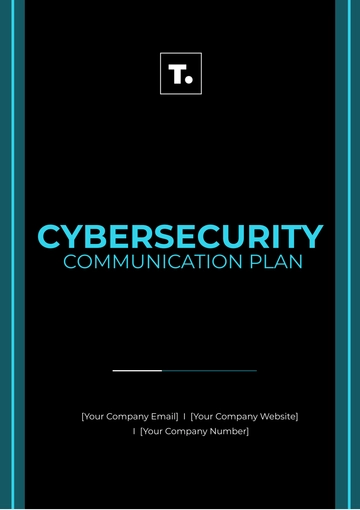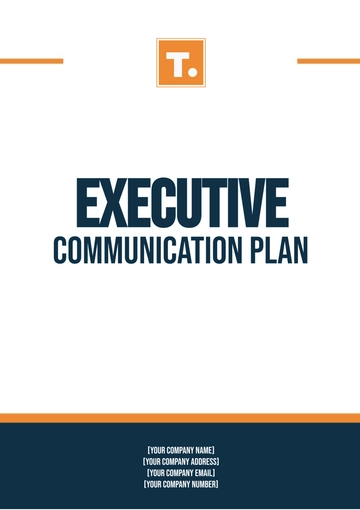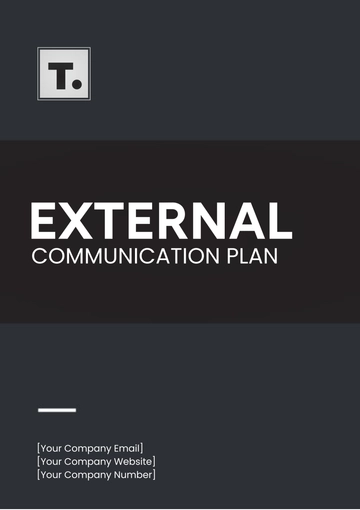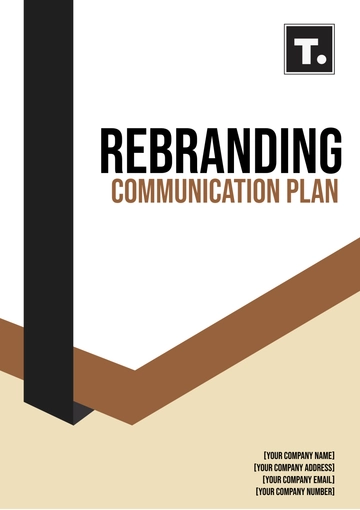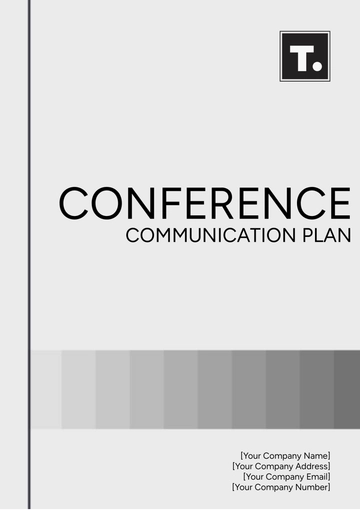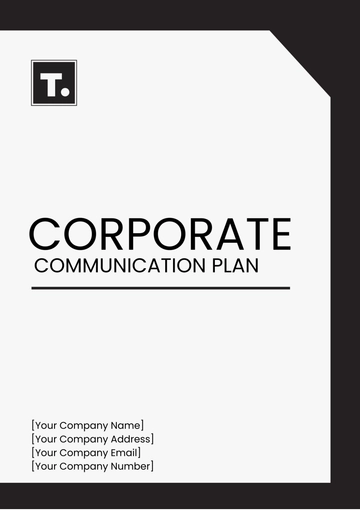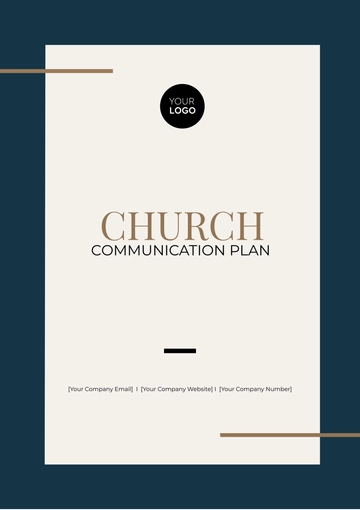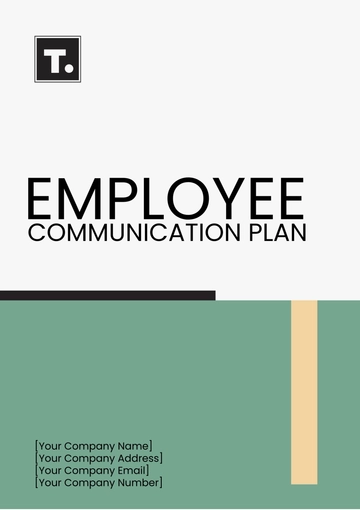Free Social Media Communication Plan
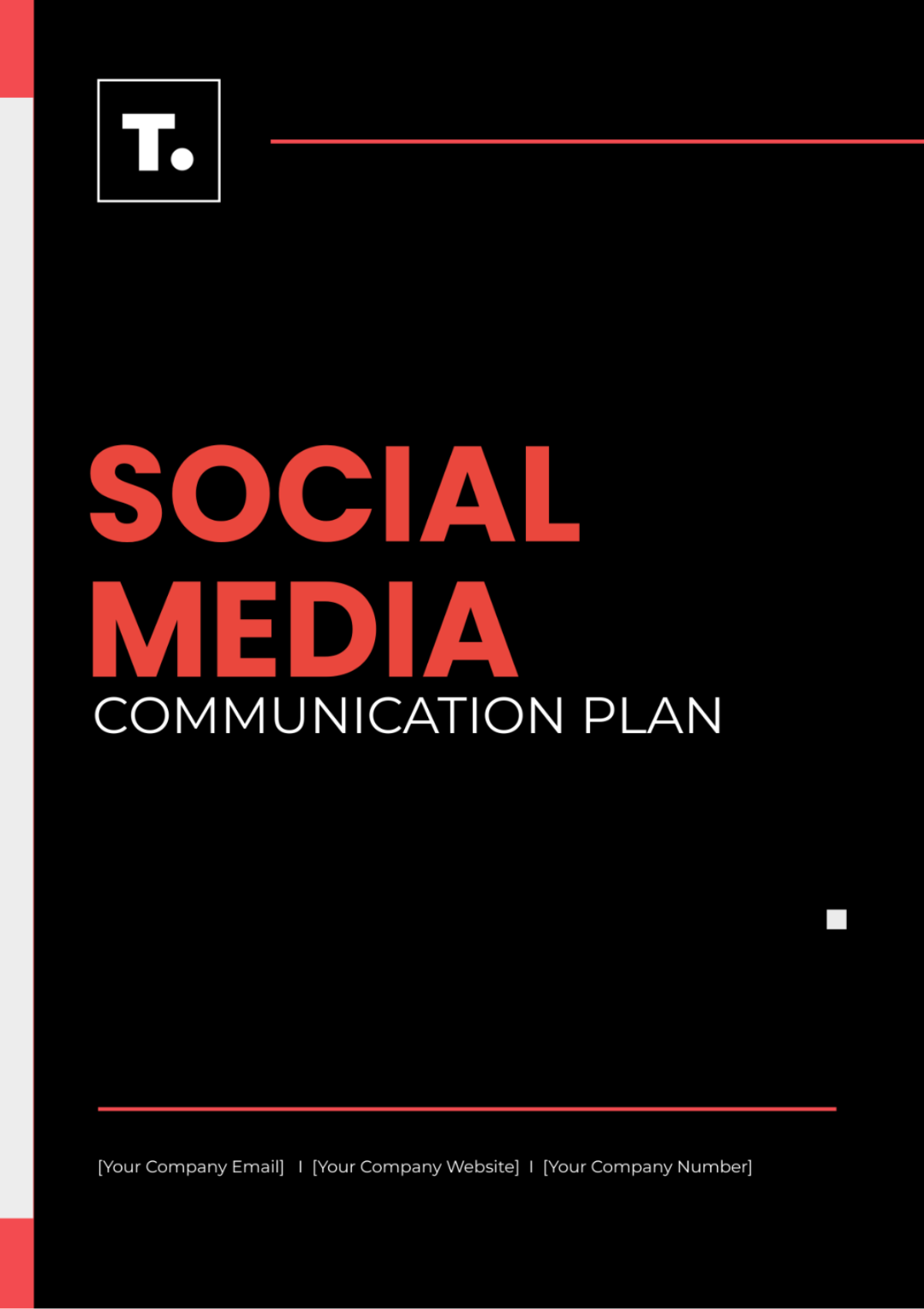
Written by: [Your Name]
I. Introduction
In an era dominated by digital interactions, crafting a robust Social Media Communication Plan is paramount for businesses seeking to thrive in the online landscape. This comprehensive template is meticulously designed to assist you in structuring and executing your social media strategy with precision. From selecting the most fitting communication channels to determining optimal timing and frequency, from defining clear roles to establishing effective feedback mechanisms, this template covers all facets of social media communication. Tailor the placeholders with your organization's unique details to transform this plan into a powerful tool that resonates with your brand identity and objectives.
II. Objectives
The cornerstone of any successful communication plan lies in its objectives. Let's delineate the primary goals that underpin our social media strategy:
Increase brand awareness: Elevate our brand presence across digital platforms to enhance visibility and recognition.
Engage with your target audience: Foster meaningful interactions with our audience to cultivate lasting relationships and loyalty.
Drive website traffic and generate leads: Direct traffic to our website and convert visitors into leads to fuel business growth.
Improve customer service and support: Provide timely and valuable assistance to our customers, fostering satisfaction and loyalty.
III. Audience Analysis
Understanding our audience is pivotal for crafting resonant communication. Let's delve into the demographics, psychographics, and preferences of our target audience:
Age: Primarily 25-40, tech-savvy individuals seeking innovative solutions.
Location: Urban centers in North America and Europe, with a burgeoning interest in emerging markets.
Interests: Passionate about technology, sustainability, and lifestyle enrichment.
Social Media Preferences: Predominantly active on LinkedIn for professional networking and Instagram for lifestyle inspiration.
IV. Communication Channels
Selecting the appropriate communication channels is fundamental for reaching our target audience effectively. Let's identify the platforms best suited to our audience and communication objectives:
Facebook: Leveraging its broad user base and diverse functionalities for community engagement and content dissemination.
Twitter: Harnessing its real-time nature for instant updates, customer interactions, and trend participation.
Instagram: Showcasing visually appealing content to captivate our audience and cultivate an aspirational brand image.
LinkedIn: Establishing thought leadership, fostering professional connections, and amplifying B2B engagement.
V. Timing and Frequency
Optimizing the timing and frequency of our social media posts is essential for maximizing engagement. Let's outline our recommendations for each platform:
Platform | Best Times | Frequency |
|---|---|---|
Weekdays, 9 am-11 am & 1 pm-3 pm | 1-2 posts/day | |
Weekdays, 1 pm-3 pm & 6 pm-9 pm | 3-5 posts/week | |
Weekdays, 12 pm-3 pm & 5 pm-6 pm | 3-5 tweets/day | |
Weekdays, 7 am-9 am & 5 pm-6 pm | 1-2 posts/week |
VI. Content Strategy
A. Content Themes
Our content strategy revolves around diverse themes tailored to resonate with our audience:
Educational: Offering insights, tips, and industry knowledge to empower our audience.
Promotional: Showcasing our products/services, special offers, and exclusive deals.
Engagement: Encouraging interaction through polls, quizzes, and user-generated content.
Entertaining: Providing lighthearted, shareable content such as memes, humor, and behind-the-scenes glimpses.
B. Content Calendar
Let's devise a content calendar to maintain consistency and relevance across platforms:
Date | Platform | Content-Type | Special Notes |
|---|---|---|---|
05/20/2024 | Photo | New product launch | |
05/22/2024 | Video | Customer testimonial | |
05/25/2024 | Link | Blog post sharing | |
05/28/2024 | Article | Industry news | |
05/30/2024 | Video | Trend challenge-response |
VII. Roles and Responsibilities
Effective collaboration hinges on a clear delineation of roles within our social media team:
Social Media Manager: Orchestrating strategy, coordination, and performance monitoring.
Content Creator: Crafting compelling and relevant content aligned with our brand identity.
Graphic Designer: Creating visually captivating assets to accompany our posts and enhance engagement.
Community Manager: Engaging with our audience, moderating discussions, and addressing customer inquiries and feedback.
VIII. Feedback and Evaluation
Continuous evaluation is imperative for refining our strategy and optimizing performance. Let's establish mechanisms to gather feedback and evaluate key metrics:
Monthly performance reviews: Assessing the effectiveness of our social media efforts and identifying areas for improvement.
User engagement metrics: Monitoring likes, shares, comments, and other interactions to gauge audience response.
Surveys and polls: Soliciting direct feedback from our audience to inform future content and initiatives.
Social media analytics tools: Leveraging data-driven insights to track performance, identify trends, and refine our strategy iteratively.
IX. Conclusion
In conclusion, this Social Media Communication Plan serves as a roadmap for managing our social media presence with precision and purpose. By customizing this template to reflect our organization's unique attributes and objectives, we can navigate the digital landscape with confidence and effectiveness. Let's implement this plan diligently, iterate based on feedback and insights, and propel our brand toward sustained growth and success in the dynamic realm of social media.
Contact Details
Name: [Your Name]
Company Name: [Your Company Name]
Company Address: [Your Company Address]
Social Media: [Your Company Social Media]
- 100% Customizable, free editor
- Access 1 Million+ Templates, photo’s & graphics
- Download or share as a template
- Click and replace photos, graphics, text, backgrounds
- Resize, crop, AI write & more
- Access advanced editor
Enhance and Discover the Social Media Communication Plan Template from Template.net: a game-changer for strategists. Crafted for seamless editing, it's customizable and editable in our AI Editor Tool. Tailor your social media strategy effortlessly with this comprehensive template, empowering you to conquer digital landscapes with finesse. Elevate your communication strategy today.
